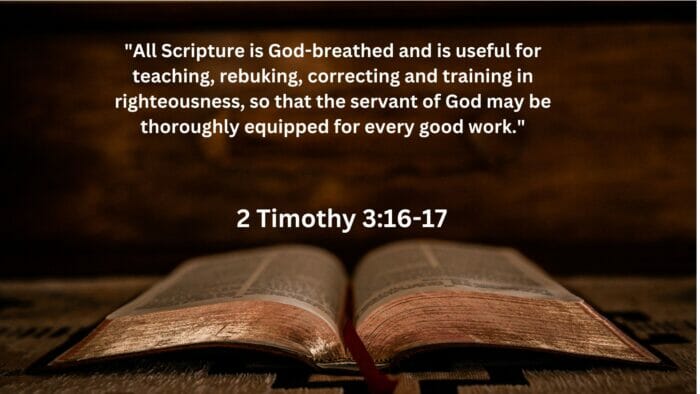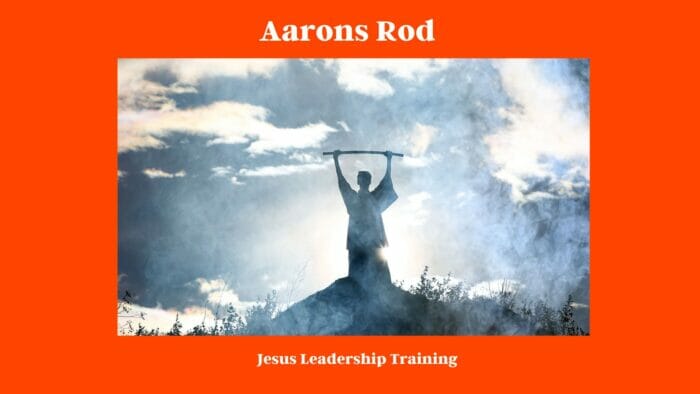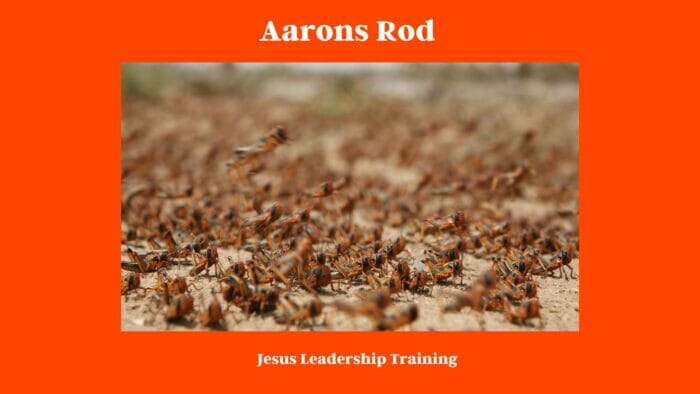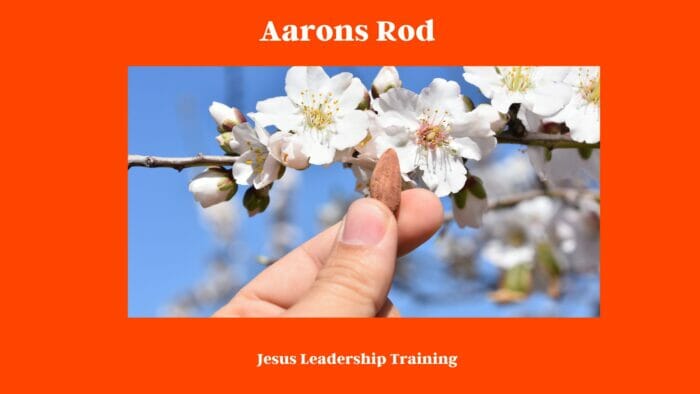Table of Contents
Aarons Rod
Aaron’s Rod is a fascinating biblical artifact steeped in divine mystery and miracles. Mentioned primarily in the books of Exodus, Numbers, and Hebrews, this special rod was no ordinary stick—it’s like the superhero gadget of the Bible!
Crafted from almond wood, it was endowed with divine powers, showcasing jaw-dropping acts like turning into a snake and even blossoming overnight. Far more than a historical relic, Aaron’s Rod symbolizes authority, divine intervention, and the unshakeable faith of a people. Whether you’re religious or just love a good story, this rod is a captivating symbol you won’t easily forget! 🌟
Aarons Rod 🌿
Are you ready to take a spiritual journey to understand this mystical rod? Aaron’s Rod has been mentioned several times in the Hebrew Bible, particularly in the books of Exodus, Numbers, and Hebrews. The rod performed wonders during the Exodus, especially in scenes like turning into a snake and budding overnight. 😇
Aaron’s Rod Meaning 📜
The meaning behind Aaron’s Rod goes far beyond it being a simple wooden stick; it’s a powerful symbol of divine authority, faith, and miracles. In biblical stories, this rod performed extraordinary feats—from turning into a snake to sprouting buds and flowers overnight—as a testament to God’s power and Aaron’s legitimate role as a priest. Essentially, think of it as a heavenly-endorsed tool that amplifies messages of faith, authority, and divine intervention. It’s like the spiritual Swiss Army knife you never knew you needed to learn about! 🌟
Significance of Aaron’s Rod ✨
So why is Aaron’s Rod so famous? This isn’t any ordinary stick; it symbolizes authority, divine power, and faith. It’s like the Bible’s version of a superhero gadget. 🦸♂️
The significance of Aaron’s Rod isn’t just in its magical acts, like shape-shifting into a snake or blooming out of nowhere. This rod is essentially a divine stamp of approval, a heavenly tool that says, “This is my chosen priest, listen up!” It serves as a powerful reminder of divine authority, a validation of faith, and a tangible way for people in biblical times—and us readers today—to grasp the concept of divine intervention. In a nutshell, Aaron’s Rod is much more than a “magic stick”; it’s a monumental emblem of faith and authority that still captivates imaginations today. 🌟
What was Aaron’s rod made of 🌳
Believe it or not, Aaron’s Rod was made from almond wood. Yep, the same almond that you might enjoy as a snack or in almond milk. This wasn’t just a random choice, though. In biblical symbolism, almond trees are often associated with watchfulness and promise, which adds another layer of meaning to this already intriguing artifact. So, next time you munch on almonds, maybe you’ll think about how they once formed a rod of divine miracles! 🌟

What wood was Moses’ staff made from 🤔

Unlike Aaron’s Rod, the Bible doesn’t specify the material of Moses’ staff. But hey, it had its magical moments too! 🌈
Ah, the staff of Moses—a biblical artifact as intriguing as it is mysterious! Here’s the kicker: unlike Aaron’s Rod, which was clearly made from almond wood, the Bible is a bit coy about the material of Moses’ staff. It leaves us all scratching our heads and asking, “What was that miracle-working stick made of?” While we don’t have a definitive answer, that shroud of mystery only adds to the staff’s awe-inspiring reputation for feats like parting the Red Sea and striking rocks to produce water. Talk about a multi-use tool with a secret identity! 🌟
What Gave Aaron’s Rod Power ⚡
Ah, the million-dollar question! The power of Aaron’s Rod came from divine intervention. God himself endowed it with miraculous abilities. 🌠
Ever wonder why Aaron’s Rod was more than just an ordinary piece of almond wood? The secret sauce was divine intervention! That’s right, this wasn’t just a DIY miracle-maker; it was God himself who infused the rod with miraculous abilities. From turning into a snake to sprouting almond flowers, the rod served as a direct channel for divine will, almost like a heavenly remote control for miracles. So, the rod’s power didn’t come from the wood it was made from or any human intervention—it was all thanks to a touch of the divine! 🌟

Spiritual Lessons we can Learn from Aarons Rod
From leadership to faith, there are some real gems of wisdom in there! Here’s a handy table to break it down for you:
| Spiritual Lesson | Explanation and Context |
|---|---|
| Divine Selection | When Aaron’s rod budded, it was God’s way of making a final decision about leadership. The lesson? Divine endorsement trumps human selection every time. 🌟 |
| Obedience | The act of collecting the rods and placing them in the Tabernacle required obedience from Moses and Aaron. Obedience to divine guidance brings clarity and solutions. 🙏 |
| Transformation | A dead stick blooming into a flower shows that, with divine intervention, transformation is possible in any situation. Your ‘dead stick’ moments can bloom, too! 🌸 |
| Validation of Faith | When God performed the miracle, it was also validation for those who had faith. It teaches us that faith is often rewarded with tangible signs. ✨ |
| Unity and Peace | The miracle brought an end to the bickering and division among the Israelites, pointing to the idea that divine intervention can bring unity and peace. 🕊 |
| Hope and Renewal | A barren rod bursting into life symbolizes hope and renewal, a lesson that no situation is too dire for divine intervention. 🌱 |
| The Power of Signs | In the absence of modern communication tools, signs like the budding rod carried immense weight. This teaches us the power of signs in confirming faith. 🛐 |
| Humility | For the other leaders whose rods did not bud, this was a lesson in humility and acceptance of God’s will. Sometimes you’re the rod, sometimes you’re the bud. 🌼 |
So, there you have it! From the story of Aaron’s Rod, you can draw numerous spiritual lessons that still resonate today. It’s like the ultimate divine classroom, with God as the teacher, unfolding life lessons one bud, bloom, and almond at a time. 🌟
Was Moses’ rod and Aaron’s rod the same 🤷♀️
Moses’ rod and Aaron’s rod are often confused, but they’re actually two separate power-packed sticks with distinct roles. While both were instruments of miracles and divine authority, Moses’ rod was more focused on guiding the Israelites through their journey (remember the parting of the Red Sea?), while Aaron’s rod was more about establishing his divine authority as a priest (like sprouting buds and flowers). It’s like comparing a Swiss Army knife to a specialized tool—each awesome in its own way but used for different divine tasks. So no, they weren’t the same rod, but they were equally mind-blowing in their divine feats! 🌟
Significance of Moses’ Rod 🌟
Moses’ Rod, like Aaron’s, was more than just a stick. It also performed miracles, like splitting the Red Sea. 🌊
This staff was a tool of liberation, guidance, and provision for the Israelites. From parting the Red Sea to striking a rock for water, Moses’ rod was all about making the impossible, possible. More than just a “magic wand,” it symbolized God’s protective hand guiding His people through thick and thin. Think of it as the ultimate “GPS” for navigating life’s toughest challenges, courtesy of divine intervention! 🌟

Powers of Aaron’s Rod 🌱
Aaron’s Rod had multiple powers, like turning into a snake and budding. Imagine your walking stick doing that! 🐍
Let’s take a look at a table summarizing these instances, shall we? 📖
| Bible Verse | Background Taking Place | Description |
|---|---|---|
| Exodus 7:9-12 | God sends Moses and Aaron to Pharaoh | Aaron’s rod turns into a serpent, devouring the serpents produced by Pharaoh’s magicians. 🐍 |
| Exodus 7:19-20 | The Plague of Blood | Aaron hits the Nile with his rod, and the river turns into blood. 💧➡️🩸 |
| Exodus 8:5-6 | The Plague of Frogs | Aaron stretches out his rod over the waters of Egypt, causing frogs to come up and cover the land. 🐸 |
| Exodus 8:16-17 | The Plague of Lice | Aaron strikes the dust of the land with his rod, and it becomes lice throughout Egypt. 🐜 |
| Exodus 9:23 | The Plague of Hail | Aaron, along with Moses, stretches his rod towards heaven, and hail strikes the land. ☄️ |
| Exodus 10:13 | The Plague of Locusts | Aaron’s rod is stretched over the land, bringing a plague of locusts. 🦗 |
| Exodus 17:9-11 | Battle against the Amalekites | As long as Moses holds up his hand (with Aaron’s help), Israel prevails. When he lowers it, Amalek prevails. Aaron’s rod is instrumental in keeping Moses’ arms up. 🛡️ |
| Numbers 17:1-11 | Contest among the tribes to end rebellion | Rods from the leaders of the twelve tribes are placed in the Tent of Meeting. Only Aaron’s rod buds, blooms, and produces almonds. 🌸🌳 |
Powers of Moses’ Rod 🔮
Moses’ Rod also had a good track record—think plagues and parting seas. Both rods were instruments of divine will. 🕊️
let’s break down the awe-inspiring powers of both Aaron’s Rod and Moses’ Staff, complete with some Scripture references for that extra layer of depth. 🌟
Aaron’s Rod
- Transforming into a Snake
- Explanation: The rod morphed into a serpent that swallowed the serpents of Pharaoh’s magicians, making it pretty clear whose side God was on.
- Scripture: Exodus 7:10-12
- Budding, Flowering, and Producing Almonds
- Explanation: This miraculous event showed that Aaron was the chosen priest among the Levites. It budded, produced flowers, and yielded almonds—all in one night!
- Scripture: Numbers 17:8
- Water to Blood
- Explanation: Aaron’s Rod was used to turn the Nile and all of Egypt’s waters into blood, the first plague to convince Pharaoh to free the Israelites.
- Scripture: Exodus 7:19-21
Moses’ Rod
- Parting the Red Sea
- Explanation: This was the epic escape route for the Israelites from Pharaoh’s army. The waters parted, creating a pathway, and then collapsed to thwart the chasing Egyptians.
- Scripture: Exodus 14:21-28
- Water from the Rock
- Explanation: When the Israelites were parched in the desert, Moses used his rod to strike a rock, and voila! Water came gushing out.
- Scripture: Exodus 17:5-6
- Turning a Staff into a Snake
- Explanation: While this sounds similar to Aaron’s rod, Moses also had this trick up his sleeve to show God’s power to the Israelites initially.
- Scripture: Exodus 4:2-4
- Frogs, Lice, and Other Plagues
- Explanation: Moses’ rod was instrumental in summoning several plagues, from frogs to lice, to convince Pharaoh to let the Israelites go.
- Scripture: Exodus 8:5-6 (frogs), Exodus 8:16-17 (lice)
And there we go! Both rods were chock-full of miraculous powers, not just as parlor tricks but as divine instruments to guide, protect, and free the Israelites. Each power serves as a testament to the awe-inspiring, faith-building narratives found in the Bible. 🌟
Aaron’s rod turns into a snake 🐍
What does Aaron’s serpent mean 🤷
The transformation into a serpent symbolized divine power and control over creation. It’s like God saying, “I’ve got this, folks.” 🌍
What does Aaron’s snake do to their snakes? 🤔
Aaron’s snake ate the other snakes created by Egyptian magicians. Talk about a power move! 🤯
When Aaron’s rod turned into a snake, it did something pretty spectacular—it gobbled up the snakes conjured by Pharaoh’s magicians. This was like the divine version of a mic drop, a clear-cut demonstration that God’s power was infinitely greater than any magic tricks Pharaoh’s team could pull off. So, in a nutshell, Aaron’s snake didn’t just show up; it showed off by eating the competition! 🌟
Why did God turn the staff into a snake 🐍
God turned Aaron’s Rod into a snake to demonstrate His omnipotence and to set His people free from Pharaoh’s tyranny. 🗽
Why did God choose to transform it into a slithering serpent? Well, here are some compelling theories:
- Showstopper: God wanted to grab everyone’s attention in a big way. And what’s more attention-grabbing than turning a piece of wood into a live snake? 🐍
- Divine Validation: God aimed to clearly demonstrate that Aaron was His chosen messenger. The snake act was like God’s stamp of approval, making sure nobody doubted Aaron’s legitimacy.
- One-upmanship: Aaron’s snake-eating the snakes of Pharaoh’s magicians was a direct challenge to Egyptian magic and authority, illustrating that God’s power was the real deal.
- Symbolism: In ancient cultures, snakes often represented divine power, rebirth, or transformation. Turning the staff into a snake could be symbolic of the transformational change God was bringing.
- A Lesson in Humility: For Pharaoh and his magicians, it was a humbling experience that showcased their limitations compared to divine omnipotence.
So, whether it was to make a statement, validate his messengers, or teach a lesson, God turning the staff into a snake was multi-layered in its significance. Just goes to show, when the divine gets involved, even the ordinary becomes extraordinary! 🌟
Aaron’s rod budded 🌸
Let’s rewind to a time when the Israelites were wandering in the desert and doubting who should serve as their priest. Enter the budding of Aaron’s Rod, a miraculous event that put all questions to rest. God instructed Moses to collect staffs from the leaders of each of the 12 tribes, including Aaron’s rod representing the Levites. They placed these rods in the Tabernacle, and guess what happened next? Only Aaron’s rod budded, bloomed, and even produced almonds! 🌸
Now, why was this so groundbreaking? Well, in a world without social media or 24-hour news, divine signs carried immense weight. Aaron’s rod budding was like a celestial thumbs-up, validating Aaron’s divine appointment as the high priest of Israel. This wasn’t just a magic trick; it was a divine endorsement that served two purposes.
First, it quashed any rebellion or doubt among the Israelites about Aaron’s role.
Second, it symbolized the concept of life sprouting from something seemingly lifeless, a nod to spiritual renewal and God’s power to bring life where there was none.
The miracle served as a concrete affirmation of faith, effectively ending the leadership debate among the Israelites. It’s like when you’re unsure of which path to take, and all the signs point you in the right direction—only this sign was more of a divine billboard saying, “Aaron is the man for the job!” 🌟
Aaron’s rod flower 🌺
This wasn’t just a random botany experiment; it was a divine message broadcast in living color (and almonds!). So, what was God trying to say here? 🌸
Well, first off, God was basically holding up a heavenly sign saying, “This is my guy!” Amidst bickering and questioning about who should serve as the high priest, Aaron’s flowering rod was a definitive endorsement of his role. If you had doubts, now you had an almond tree as proof. You can’t get more conclusive than that!
Secondly, the flowering also stood as a symbol of transformation and growth. A seemingly dead stick bursting into life can be seen as an allegory for spiritual and communal revival. Just like the rod, Israel would flourish and thrive under divinely chosen leadership.
So, all in all, by making Aaron’s rod bloom, God was making a statement about leadership, divine selection, and the potential for growth and transformation. It’s like God was saying, “With the right leadership, watch how you, too, can bloom.” 🌸🌟
Aaron’s rod Flower Verse 📖
Check out Numbers 17:8 for the detailed account of this miraculous budding. 📚
8 “And it came to pass, that on the morrow Moses went into the tabernacle of witness; and, behold, the rod of Aaron for the house of Levi was budded, and brought forth buds, and bloomed blossoms, and yielded almonds.
Aaron’s rod with flowers meaning 🌹
The flowering rod symbolized Aaron’s divine appointment and legitimacy as a priest. It was proof that he was God’s chosen. 🙌
What happened to Aaron’s Rod 🤷♂️
The whereabouts of Aaron’s Rod has long intrigued scholars, historians, and believers alike. While the Bible gives us clues, various traditions also provide possible answers. Here’s a table breaking down both:
| Source | Location of Aaron’s Rod | Description |
|---|---|---|
| Biblical References | ||
| Book of Numbers | Ark of the Covenant | According to Numbers 17:10, God instructed that Aaron’s rod be placed before the Testimony as a sign against rebels. This is often interpreted to mean it was stored in the Ark of the Covenant. |
| Hebrews 9:4 | Ark of the Covenant | This New Testament verse also suggests the rod was stored in the Ark, along with manna and the stone tablets. |
| Traditions | ||
| Jewish Tradition | Lost with the Ark | According to Jewish tradition, the Ark and its contents, including Aaron’s rod, were hidden by King Solomon and have been lost since. |
| Christian Tradition | Various Churches | Some Christian traditions suggest that the rod may have been separated from the Ark and is stored in an undisclosed church location. |
| Islamic Tradition | Al-Baqi’ in Medina | Some Islamic texts suggest that Aaron’s Rod may be buried in Al-Baqi’ cemetery in Medina, although this is not universally accepted. |
While the biblical references lean towards the Ark of the Covenant, traditions open up various intriguing possibilities. So, whether it’s gathering dust in an undisclosed location, lying in a sacred cemetery, or waiting to be discovered alongside the Ark, the location of Aaron’s Rod remains a tantalizing mystery! 🌟
Bible Verses 📜
The last biblical mention of Aaron’s Rod is in Hebrews 9:4, where it is said to be stored in the Ark of the Covenant. 🏺
Tradition 📜
Traditionally, it’s believed that Aaron’s Rod is still within the Ark of the Covenant. The Ark itself is a subject of mystery and speculation. Who knows where it is today? 🤷♀️
Final Thoughts 🤔
So there you have it! The story of Aaron’s Rod is a tale rich in symbolism, miracles, and divine messages. It’s not just a rod; it’s a beacon of faith, authority, and divine power. Whether you’re religious or not, it’s a fascinating subject, isn’t it? 🌟
FAQs
- What is Aaron’s Rod?
- Aaron’s Rod is a biblical object known for its miraculous abilities.
- Was Aaron’s Rod and Moses’ Rod the same?
- No, they were two different rods, although both were instruments of divine will.
- Why did Aaron’s rod turn into a snake?
- To display God’s power and liberate the Israelites from Pharaoh.
- What kind of wood was Aaron’s Rod made from?
- It was made from almond wood.
- Where is Aaron’s Rod now?
- Traditionally believed to be in the Ark of the Covenant, whose location is unknown.





